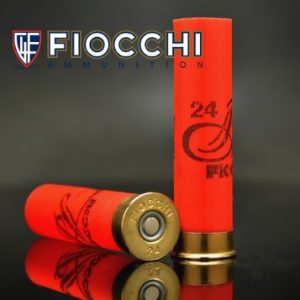Tracing the Evolution of the 24 Gauge Shotgun
The 24 Gauge Shotgun traces its roots back to the mid-19th century, during a time when firearms were transitioning from flintlock to percussion cap mechanisms. The term ‘gauge’ comes from the old English ‘gauging’ system, where the diameter of the barrel was measured. The number 24 signifies that 24 solid lead balls of the same diameter as the inside of the barrel would weigh one pound. Hence, the 24 Gauge Shotgun had a smaller diameter than the more common 12 or 20-gauge shotguns.
Initially, the 24 Gauge Shotgun was popular among hunters, particularly for bird shooting and other small game. It was favored for its lighter weight and reduced recoil, which offered greater ease of use and maneuverability. Its popularity soared through the late 19th and early 20th centuries, as improvements in gunpowder and shell design made these smaller gauge shotguns more effective and reliable.

Evolution and Improvements of the 24 Gauge Shotgun
Throughout the 20th century, the 24 Gauge Shotgun underwent several significant enhancements. The development of smokeless powder in the early 1900s revolutionized shotgun performance, allowing for greater power and range. This was a major advancement for the 24 Gauge, enhancing its hunting efficacy for larger game beyond just birds.
The mid-20th century saw the introduction of plastic shells, which were lighter, more durable, and more weatherproof than their paper counterparts. This innovation further cemented the 24 Gauge’s standing as a versatile and reliable shotgun choice. However, despite these advancements, the 24 Gauge suffered a decline in popularity as the larger 12 and 20-gauge shotguns became more favored for their increased firepower and versatility.

The 24 Gauge Shotgun in Historical Events
Although not as widely recognized as its larger counterparts, the 24 Gauge Shotgun has nonetheless played its part in historical events. During the First and Second World Wars, shotguns were employed in a variety of roles, from close-quarters combat to foraging for food. While 12 and 20-gauge shotguns were more commonly deployed, there is evidence of 24 Gauge being used, particularly by resistance fighters who valued its light weight and compactness.
In more recent history, the 24 Gauge Shotgun has found a niche in the sport of clay pigeon shooting. Its lower recoil makes it a popular choice among younger and less experienced shooters, helping to cultivate their shooting skills before progressing to larger gauges.
Today, the 24 Gauge Shotgun maintains a relatively modest presence in the firearm world. It is not as widely produced as the 12 or 20-gauge, resulting in a smaller market presence. However, a dedicated community of enthusiasts and collectors continue to value these shotguns for their historical significance and unique shooting qualities.
Despite its relatively low production, the 24 Gauge Shotgun continues to be used in clay pigeon shooting competitions and hunting small game. It is also favored by some for home defense, given its manageable recoil and adequate power. Decades after its creation, the 24 Gauge Shotgun remains a testament to the ingenuity and evolution of firearm technology.
While it may not boast the popularity of its larger gauge counterparts, the 24 Gauge Shotgun holds a special place in the annals of firearm history, echoing an era where balance and precision took precedence over sheer power.
# # #


Comments